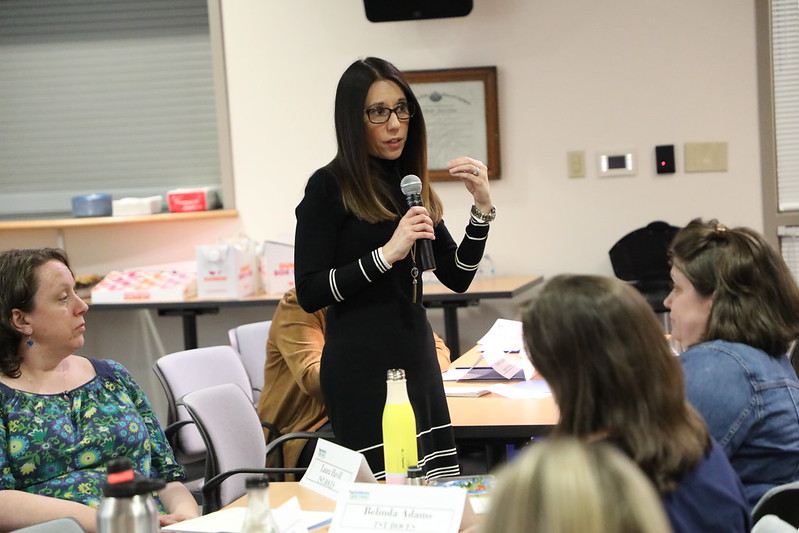For Maggie Hill, a senior early childhood education major at SUNY Cortland, teaching is a passion. But she realizes she’s lucky. She has the means to pursue her passion. Many economically disadvantaged students don’t.
“My education costs a lot more than just tuition,” she said noting that for those who don’t have a car, for instance, there are few supports for things like getting to off-campus practicums, or paying for expensive, mandatory tests like the edTPA. “Education programs are set up for people who come from a certain position of privilege — I think that could keep a lot of people from entering the field.”
Hill was one of scores of current and future educators who participated in the Southern Tier “Take a Look at Teaching” summit in Elmira Heights to discuss solutions to the state’s teacher shortage. Led by NYSUT Executive Vice President Jolene DiBrango, and hosted in partnership with the Elmira Heights and Horseheads teachers associations, the March event was the eighth in a series of nine statewide summits.
“Last year at the North Country summit, I met an educator whose district asked a retired science teacher to return to the classroom because the teacher shortage is so great in his area,” said DiBrango, in welcoming remarks to event participants. She encouraged them to consider partnering with colleagues in higher education to boost recruitment. “We know there will be jobs waiting when students graduate — we can work together to steer candidates into subject shortage areas like ESL, science, art and music education.”
Although the New York State Teachers’ Retirement System projects that a third of New York State teachers could retire in the next five years, enrollment in state teacher education programs has fallen 53 percent since 2009. It’s estimated that New York will need 180,000 new teachers in the next decade. DiBrango urged participants to share ideas to overcome the shortage.
Benita Eldridge, a music teacher in the Elmira City School District, noted that recruiting people of color into districts like hers is difficult since the community, for many, feels isolating. For candidates who come from diverse communities a district like Elmira can feel “like a totally different planet,” she said noting that she is the only teacher of color in her middle school building. “They don’t stay because they want to return home — that’s a big issue.”
“In the STEM field, there’s an initiative that forgives college tuition if students work in New York State for five years,” said NYSUT Board member Dora Leland, a Horseheads TA member who helped organize the summit. Rather than loan forgiveness, she suggested upfront grant money would be a better incentive for future teachers.
Other suggestions include asking younger educators to join in district recruitment efforts; providing greater mentoring support for new teachers; and instituting payment plans for teacher tests, to make them more affordable for college students.

“I hope this is the start of the conversation not the end of it,” said DiBrango who thanked participants, pledged to compile their recruitment ideas and encouraged them to contact her office with information about successful future teacher clubs, or grow-your-own educator recruitment programs, in their districts.
NYSUT’s “Take a Look at Teaching” initiative seeks to elevate the teaching profession, raise awareness of and brainstorm solutions to the teacher shortage, highlight challenges to teacher recruitment and encourage more qualified individuals to consider the teaching field, particularly people of color. The final TALAT summit takes place at NYSUT headquarters this spring.